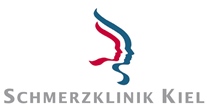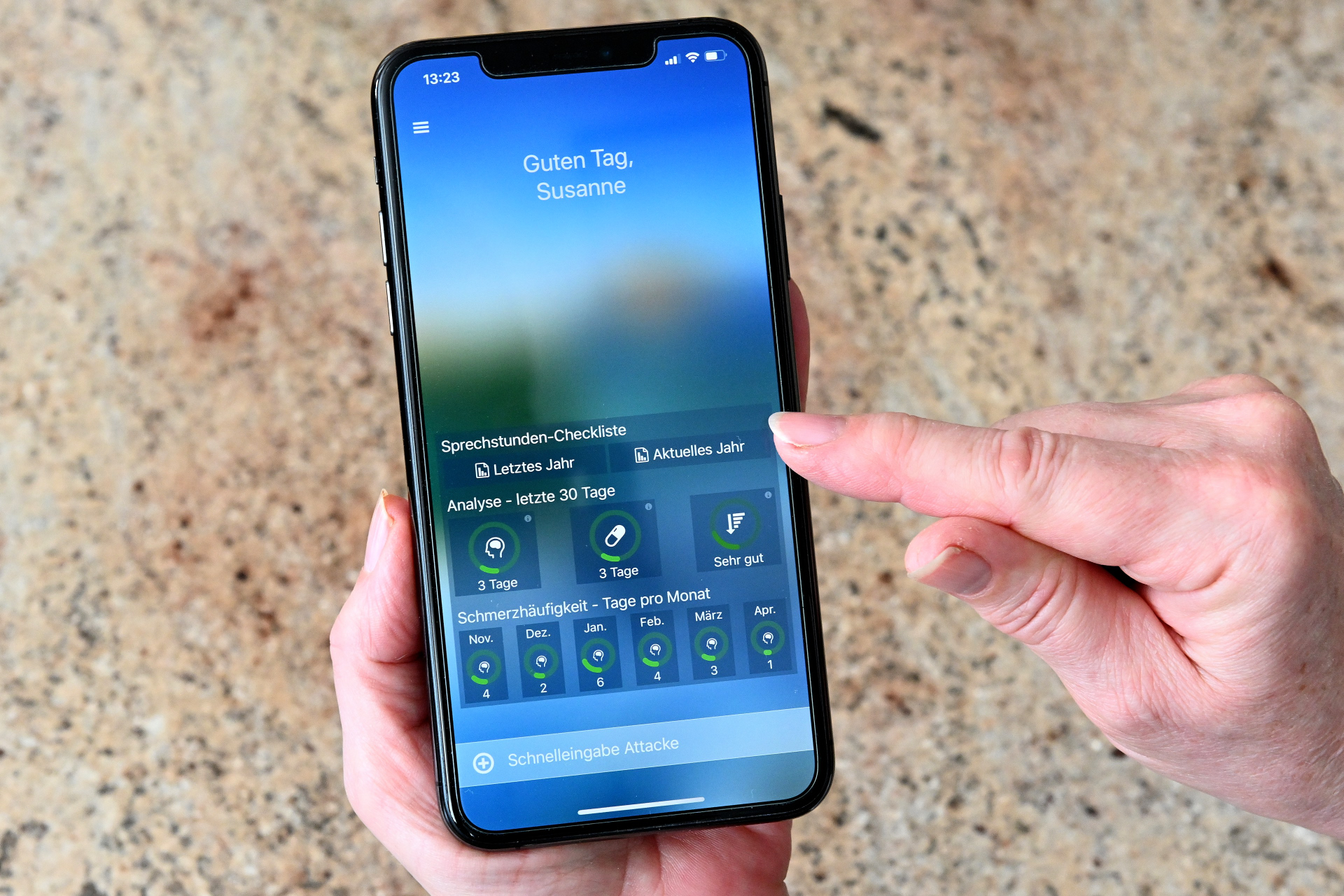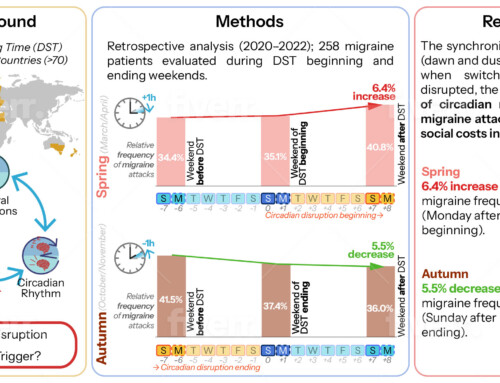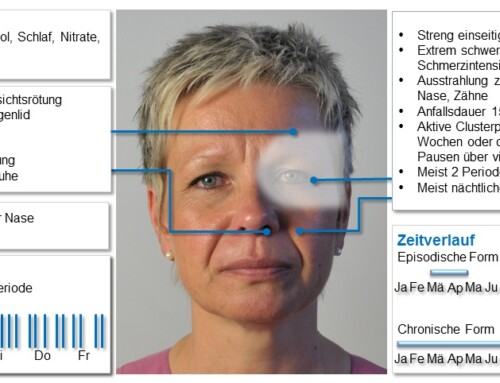This extensive update of the migraine app 04/2020 from the Kiel Pain Clinic and the Techniker Krankenkasse (TK) adds many new functions and optimizations, including:
- New score for the degree of disability caused by headaches (GdBK score)
- Prospective assessment of the impairment of work, family and social life caused by headaches
- Prospective recording of the degree of disability caused by headaches (GdBK score)
- New reminder function for preventative medications
- New reminder function for data backup and backup
- Updating the medication database
- Updating the media library and information tools
- Adaptations to current operating systems
- Numerous optimizations of functions in detail and much more!
- Find out more in the video instructions (selection in the menu) so that you know and can use the extensive functions.
The migraine app is a digital care offer that is directly integrated into professional medical care. Both patients and the treating doctors should be supported. To ensure that a direct route to the data analyzes created by the migraine app is possible during medical consultations, a direct link to the consultation checklists has been added to the overview page.
New consultation checklists for the doctor
Using quantitative progress parameters, it is possible for patients and doctors to optimize the therapy adjustment, control the progress and increase the effectiveness of the treatment measure. For this purpose, the consultation checklist was integrated into the migraine app. It can be accessed directly via the app's overview page by the patient or doctor in the cockpit. Here you can find the consultation hour checklist with the summarized data sets for the current year and the previous year. If desired, this analysis can be exported as a PDF form, for example via email, and integrated into the doctor's practice information system. This also makes it possible to store the data in the electronic patient file. Data retrieval can only take place actively with authorization from the patient.
Analysis of headache characteristics
The annual evaluation shows the aggregated data sets for the respective month of the year. In the first four columns, different headache phenotypes are differentiated. Column A contains the days with a migraine aura, column M the days with a migraine, column S the days with a tension-type headache, and column U for other undetermined types of headache. Migraines and tension-type headaches are responsible for approximately 92% of all headaches in the population. Therefore, the migraine app focuses on these two main forms. If other headache forms that do not correspond to these phenotypes are present, they are subsumed in the U column, ie, undetermined type. Since the International Headache Classification differentiates 367 main types of headaches, it is not possible to meaningfully document all headache phenotypes and headache subtypes.
Assessment of headache-related disability
Using the migraine app requires a trained patient who can differentiate the type of headache they have in everyday life. Since the patient also needs to know in everyday life which type of headache he should use which acute therapy or other treatment measures, differentiating the headache phenotype is a prerequisite for professional treatment. Therefore, the migraine app does not need to prospectively query all features of the headache phenotype for each attack, as this decision is made by the patient. The patient enters the relevant characteristics in the “Quick Entry” menu and also documents the severity, duration, type of acute medication used and its effectiveness. At the same time, he documents the effects of the headache on work activities, household activities and leisure activities. The migraine app progressively records the degree of impact on these areas of activity. A restriction of activity by more than 50% is documented to record the degree of disability caused by headaches. The migraine app also records whether activity is completely impossible in the respective area due to headaches. If this affects work, a day of incapacity for work is recorded. If household or leisure activities are made completely impossible, this will be documented as 100% impairment. The days of impairment caused by the headache are summed up per month and shown in the last column as GdBK points, as the degree of disability caused by the headache. This means that the patient and doctor receive a direct picture of the disability caused by the headache in the respective month. This score is calculated analogously to the MIDAS score. In contrast to the MIDAS score, however, the data is continuously collected prospectively, so the reliability is significantly higher. The MIDAS score records the corresponding impairments retrospectively from memory for a period of three months. It is evident that the value obtained in this way is much more prone to errors. The analysis of the progression parameters collected in this way can now be used directly to make treatment decisions. A significant decrease in the number of migraine days per month by at least 50% can operationally prove the effect of a chosen headache prophylaxis. The treating doctor can see directly whether, for example, the selected medication is effective or whether therapy needs to be adjusted by increasing the dose or changing the medication. By analyzing the number of headache days per month, the development of chronic migraines can also be mapped. If the sum of migraine days and days with other headaches is 15 or higher over a period of more than three months, the diagnosis of chronic migraine may be justified.
Analysis of the severity and duration of headache attacks
Whether the headache therapy is effective over time can also be determined by the severity and duration of the headache attacks. The sum of the individual values per month is calculated for the severity and duration and at the same time an average is calculated. The severity of the headache is documented with a score (0= none, 1= mild, 2= moderate, 3= severe, 4= very severe). The respective graduations are described in the legend on the evaluation PDF. A reduction in the average severity and a reduction in the average duration of headache attacks can be used as an effectiveness of preventive treatment as well as acute treatment.
Analysis of drug effects
The operational assessment of the effect of acute therapy can be carried out by analyzing the effect of the medication. First, the days of intake for acute therapy are shown for each month. The decrease in the need for acute medication can also be interpreted as an indication of effective prophylaxis. On the other hand, an increase or even an increase in the number of days taken per month over 10 or more days per month can be seen as an indication of increasing chronicity and the development of a medication overuse headache. Here it is important to discuss in detail with the patient that the 10-20 rule must be adhered to and that exceeding the 10 limit promotes further chronicity. Simply by pointing out an appropriate limit on the amount of acute medication taken per month and possibly being instructed on how to take a medication break can significantly stabilize and improve the headache.
The effect of acute medication can be determined using the medication effect. For this purpose, a score for the medication effect is shown. The drug effect (grading 0= no effect, 1= weak, 2= medium, 3= good, 4= very good) shows an effect of 0 in the worst case and an effect of 4 in the best case. Ideally, a score between 3- 4, ie good to very good, is the aim. If the score is below 3, an adjustment of acute therapy should be considered.
Degree of headache impairment: GdBK score
The effects of headaches on activities at work, school and studies are particularly relevant for assessing the severity of the headache. This also applies to the impact on household activities as well as on leisure and social activities. The migraine app continuously and prospectively documents the degree of impairment caused by the headache for the respective areas and aggregates this data monthly. For each month, the sum of the affected areas of activity is created into an overall score. This overall score is referred to as the GDBK point score and quantitatively reflects the degree of impairment caused by headaches. The GDBK points can therefore directly quantify the headache-related impairments for the respective month. The increase or significant decrease can directly and quantitatively document the effectiveness of the headache treatment and the effects of the headache on the quality of life in the follow-up. A reduction in the GdBK score of 30% or more can be considered a clinically significant improvement.
The consultation checklist makes it possible for doctors and patients to immediately track headache symptoms over the last few months and to make individual, data-based therapy adjustments. However, it is essential that the doctor can make an appropriate interpretation of the data pattern. If the migraine app is trained accordingly, the migraine app is an objective tool for analyzing the course of the disease and optimizing therapy in care for both the patient and the doctor.
Reminder function for preventive medication
Numerous new functions have been added for the patient himself. In the “Settings” menu there is a reminder function for preventative medications. The migraine app reminds you to take medication. To do this, it sends a pop-up to the mobile phone informing the user about taking medication at the relevant time. The reminder function can be selected depending on the frequency of intake, e.g. daily intake, multiple daily intake, monthly intake or intake every 4 weeks or every 12 weeks, etc.
Data backup reminder function
Furthermore, a reminder function for data backup and data backup has been installed. The migraine app reminds you to back up your data every four weeks. To do this, you send the database to your own email account. If the mobile phone is lost, this database can be read in directly during a new installation and the collected data will not be lost.
Updated medication database
The medication database installed in the migraine app has also been updated and contains the current medications relevant to migraine and headache therapy.
Update media library and information tools
The Migraine app's media library and information tools have also been updated and expanded.
Adaptation to current operating system versions
Technical changes concern adjustments to the current operating system versions and numerous optimizations of functions in detail.
Video instructions help to optimize usage
To understand all the functions of the migraine app, you should watch the video instructions step by step. This makes it possible to use and know the extensive professional functions of the migraine app.











So yes, there was something new/different in the migraine app.
It's getting better and better, great new functions.
Control, measurement and information up to regular data backup!!!
New relaxation versions and new voices. COOOOL
Olaf, piper